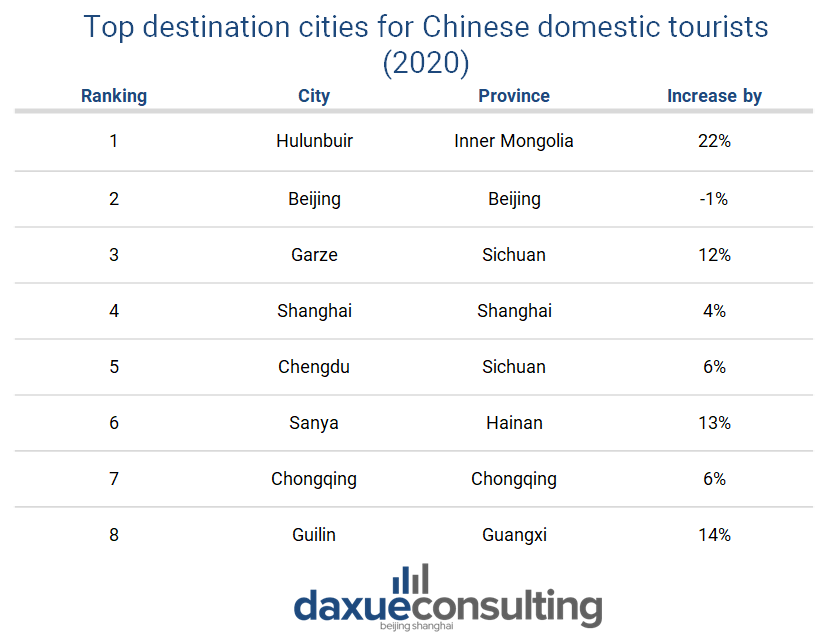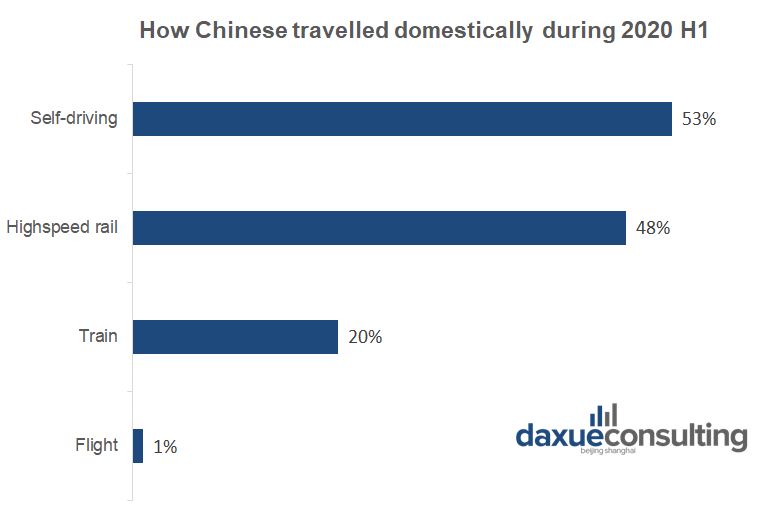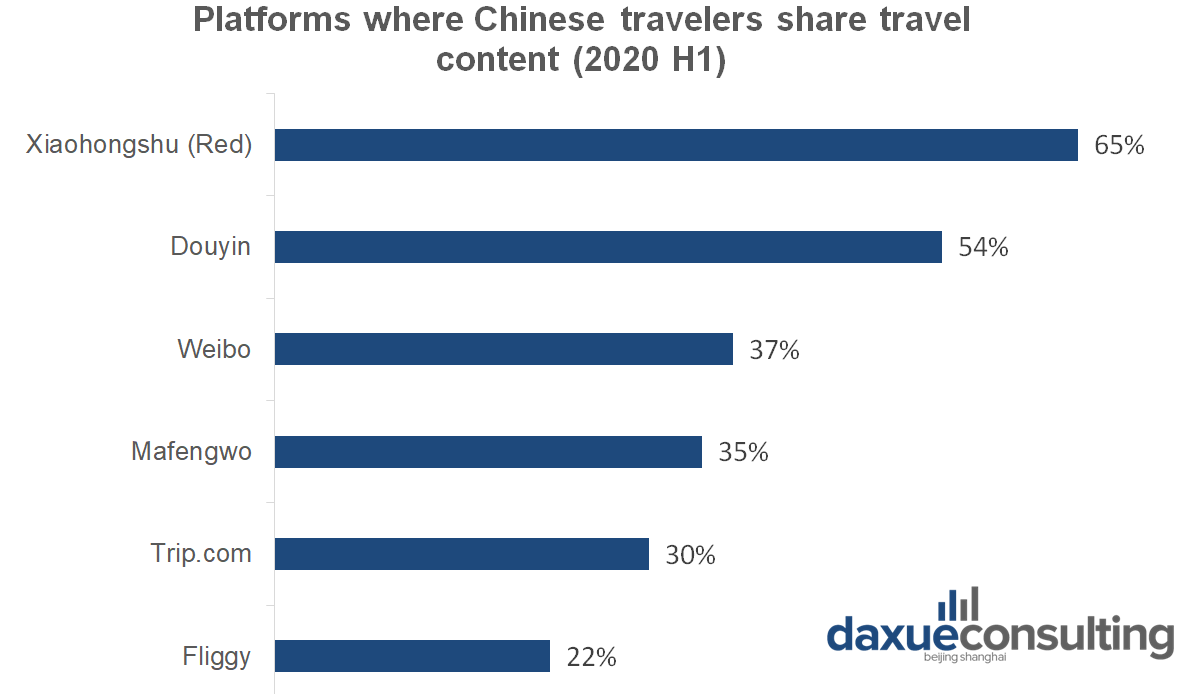The COVID-19 pandemic made 2020 a challenging year for many industries, particularly, tourism has become one of the most affected sectors. Outbound travel, which had grown fast among Chinese consumers, experienced the toughest winter yet, due to international airline control and cross-border travel restrictions. On the contrary, thanks to the effective response to the COVID-19 outbreak in the first half of the year, Chinese domestic tourism is recovering step by step. On top of this, most Chinese tourists are gradually shifting their preferences for travel towards domestic destinations.
According to a report by the China Tourism Academy, China’s domestic tourism revenue was expected to decrease by 52% to 2.76 trillion yuan in 2020, and the number of domestic tourists to fall by 43% to 3.43 billion, with a majority of the loss from the first half of the year.
However, the market has recovered by 80 percent as of November, and the number of tourists that visited major tourism spots in China has increased by 159 percent in the second quarter when compared to the first quarter. There is a robust rebound in China’s domestic tourism.

Source: Mafengwo and China Tourism Academy; Top cities for domestic travel in China 2020
1. Duty-free boosts Chinese domestic tourism
In July, in order to attract more tourists and revive tourism, authorities more than tripled the annual duty-free purchases limit in Hainan, the southern island province in China, to 100,000 yuan per person, and expanded the number of duty-free product categories from 38 to 45, including electronic products and perfumes.
Since the implementation of the new policy, the average daily sales of offshore duty-free stores in Hainan have exceeded 120 million yuan, more than double from 2019. A total of 65 million tourists visited Hainan island and tourism revenue reached 86 billion yuan in 2020, making it become one of the best regions in China to recover from the impact of the pandemic on tourism.

Source: Xinhuanet.com; A sales assistant packs purchased products at a duty-free store in Haikou, capital of south China’s Hainan Province Jan. 7, 2021.
One powerful driver of this recovery is that Chinese travelers can spend their money on duty-free goods, including cosmetics and electronics, without traveling abroad. Before the coronavirus outbreak, Jeju Island of South Korea, was one of the popular outbound destinations in Chinese duty-free industry. But now, in Sanya, Hainan, people can get duty-free goods for the same price or even cheaper and enjoy the beach as well.
2. Night-time economy lights up Chinese domestic tourism
Encouraging night-time activities has also become a part of a large drive for Chinese domestic tourism recovery. Many cities have launched events such as “tourist spot night hours” and “cultural night markets”, attracting many tourists from the whole country.
Since ancient times, night tours have been an important activity in China. Many attractions integrate local food, traditional performances and themed night markets. According to Mafengwo, night markets and local street food are the most popular night activities for Chinese tourists. 93.14% of survey respondents say they hope to enjoy the local night markets in every city they visit. During the COVID-19 outbreak, many restaurants and night markets had to close their doors. As life is coming back to normal, night markets have become as noisy as ever, filled to the brim with tourists and locals.
In addition to food, visitors are eager to see nighttime skyline views from river cruises high-rise buildings.

Source: Zhihu; the night view of Hongyadong, Chongqing
Shanghai started to increase nightlife activities in June 2020. In addition to the night tour of the Huangpu River and the Bund, the night-time fireworks show at Disney and Anyi night street food market make Shanghai become the most popular domestic night-time destination for young tourists. Also, with the hot trend of cyberpunk in 2020, Chengdu and Chongqing are also on the list. Xi’an, a city with rich history, attracts tourists’ attention through traditional lantern markets.
3. Natural scenery is now a favorite for travelers
The pandemic has brought high attention of domestic tourists to the natural scenery. Compared to crowded urban cities, where of the risk of spreading COVID-19 is higher, more tourists went to natural scenic spots.
On the one hand, after the coronavirus crisis, more and more people are paying attention to safety and health factors during their trips, so road trips have become the top choice instead of group tours. Road trips also have better privacy and freedom, making them acceptable for many Chinese families. On the other hand, the beauty of nature has become even more desirable after the quarantine period when people were locked in their homes.

Source: BDR; designed by Daxue Consulting, Distribution of travel transportation in China 2020H1
Natural scenery attracts independent adventurers and families who have the means to go on road trips. However, there is another factor driving scenic tourism in China. As short video platforms thrive in China, videos of snowy mountains, grasslands and glaciers spread widely on the internet. These videos spark many netizens’ interest in natural scenery as a tourism destination.
With many offline activities going online during the pandemic, the Chinese tourism industry has also launched many online activities and online promotions to drive the recovery.
In November, Tenzin, a young Tibetan man from Garze, Sichuan, went viral on Douyin for his handsome appearance and fascinating rural lifestyle. In his video “Tenzin’s world”, he showed the audience the snowy peaks, temples, and stupas in his hometown. In a week, according to Qunar.com, hotel booking in the Garze area was 89 percent up compared to the same time last year, and orders to Garze Gesar Airport increased about 20 percent.

Source: CGTN; the view of snow mountain and green lake in Garze
4. Social media platforms guide Chinese domestic tourists
Instead of the traditional travel agency, social media platforms are widely used to decide travel plans. Travelers view long and detailed travel posts, including trip notes, photos, and reviews, which are more reliable sources of information.
Some content-focused platforms, like Xiaohongshu and Zhihu, have high-quality posts from KOLs and KOCs help travelers decide specific activities. While other fast-spreading platforms, like Weibo and Douyin, help consumers decide destinations.

Source: BDR; designed by Daxue Consulting, Platforms where Chinese travelers publish travel content
Social media platforms simply have more updated information and local suggestions which travel agencies cannot always compete with. As the pandemic is still spreading in China at low risk, the tourist spots rules change quickly, and travelers can get firsthand information through social media.
5. Family travel is rising
During the COVID-19 outbreak, some spent months on end with their family, while others were far from home were unable to get together with their families due to the transportation restrictions. But all of these made people more aware of the importance of family and devoted more time to family members.
According to Trip.com, the quality of family travel is rising in 2020, for example, 45% of the total hotel bookings are with 4-star and 5-star hotels. Also, the data from Fliggy shows that the average Chinese senior citizen (above 60 years old) traveled 2.7 times in the past year, and the average spending amount increased by 17% year-on-year. For Chinese young people, family travel is no longer about taking care of children or elders, but about important enjoying family time.
Learn something new? Stay updated on the Chinese market by following our WeChat, scan the QR code below, or subscribe to our newsletter

Learn more about Chinese duty free consumption
Listen to over 100 China entrepreneur stories on China Paradigms, the China business podcast
Listen to China Paradigm on Apple Podcast






